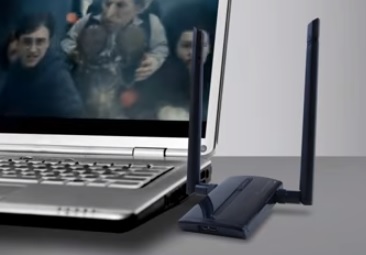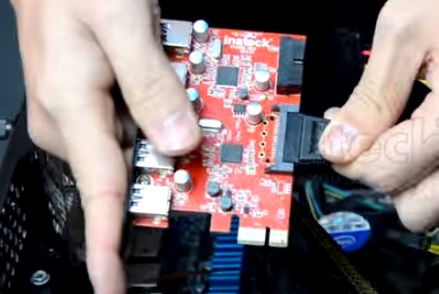
USB 3.0 was introduced in November 2008 and become wide spread a few years later.
Although USB 3.0 has been available awhile doesn’t mean all devices are compatible. Even today in many devices are only USB 2.0 compliant.
USB 2.0 is great for basic input output of devices from a mouse to a wireless USB adapter.
It has began to show its age though especially when it comes to high speed data transfer.
What is the difference between USB 2.0 and USB 3.0?
Speed is the biggest difference between the two.
USB 2.0 can transfer data up-to 480 megabits per second (60MBps)
USB 3.0 can transfer data up-to 5gbps (640MBps)
USB 3.0 is able to move data 10X faster than USB 2.0 giving it a huge advantage.
Why Does This Matter to WiFi?
If you are looking to get faster WiFi, then USB 3.0 and the type of dongle bought will matter greatly.
Read Here for Our Picks of Top USB WiFI Adapters.
The wireless protocol used will also effect the speed.
Only the new WiFi protocol 802.11ac can transfer at these high speeds.
Wireless-AC has a transfer rate up-to 5 Gbps.
The last WiFi protocol Wireless-N can only transfer up-to 300 Mbps
Should You Get a 802.11ac USB 3.0 Adapter?
If you are looking for faster WiFi speeds then a 802.11ac USB adapter is much faster than older hardware.
Whether you can use these speeds or not depends on the network being used.
Besides the router which must be 802.11ac compatible, the internet speed of the provider must also be considered.
Internet speeds can vary greatly from 5Mbps to 300Mbps or faster.
If your internet provider can only give you a slow speed connection then USB 3.0 and 802.11ac speeds will bottleneck and not be of benefit.
For those who have a fast internet connection or need fast speeds on their internal network then USB 3.0 would be beneficial.
The computer hardware used must also be USB 3.0 capable or the speeds will max out at 480Mbps.
Upgrading a older desktop computer to USB 3.0 is relatively easy with a PCI card such as the ORICO USB 3.0 PCI Express expansion card.

A laptop would be stuck with the USB ports it was built with. (The internal wireless card may be upgrade-able)
Summary
If you are looking to get the highest wireless speeds available for your network setup then USB 3.0 and 802.11ac are a good improvement over USB 2.0 and 802.11n.
Be sure to keep in mind other components of the network such as the router and internet provider, as a network is only as fast as its slowest part.